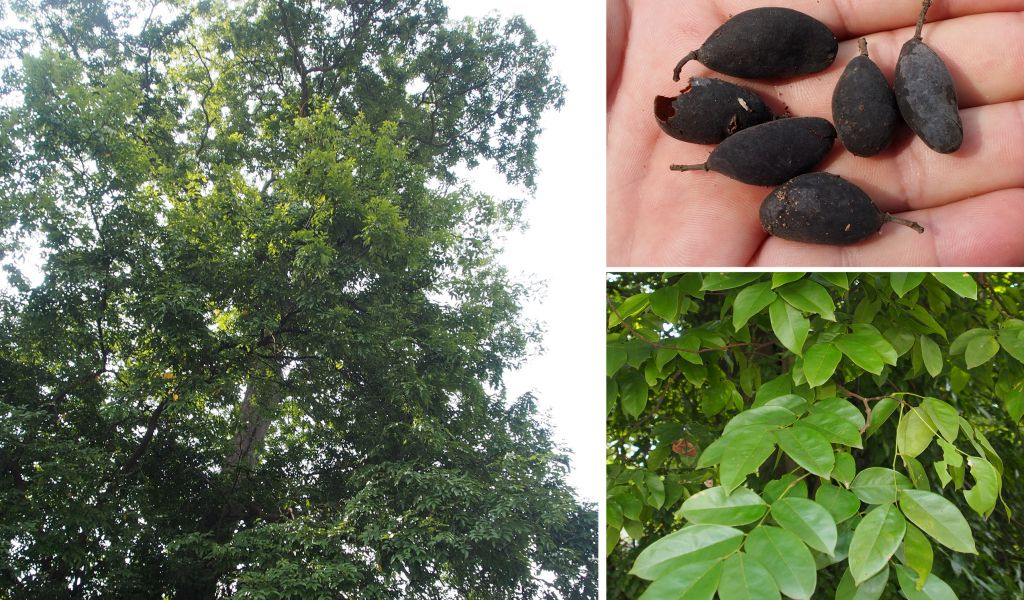ໄມ້ໝາກເຄັງ / Velvet Tamarind
APA 6th ed. ໄມ້ໝາກເຄັງ / Velvet Tamarind. (2019, April 3). Retrieved from https://www.phakhaolao.la/kb/0000218
MLA 8th ed. ໄມ້ໝາກເຄັງ / Velvet Tamarind. Pha Khao Lao, 3 April 2019, https://www.phakhaolao.la/kb/0000218.
Chicago 17th ed. Pha Khao Lao. 2019. "ໄມ້ໝາກເຄັງ / Velvet Tamarind." Published April 3, 2019. https://www.phakhaolao.la/kb/0000218.

Cambodia: krâlanh lomië
Thailand: khleng (general), i-dang (northern), kayi (peninsular)
Vietnam: xoay, xây, nhội, Lá mét, Xài mét
Large deciduous trees up to 35 m high, bole 16–18 m high, 80–100 cm diameter, rarely 150 cm. Trunk straight, buttresses inconspicuous. Bark generally grey or whitish, slightly rugose, inner bark 6–8 mm thick, hard, brownish, exuding a little transparent resin, soon turning red. Stipules small, caducous. Leaves imparipinnate. Petioles 12–20 mm long, glabrous or pubescent; rhachis 5–15 cm long, glabrous or glabrescent. Leaflets 5–9, alternate, broadly ovate to elliptic, 4–7 by 1.5–4.5 cm, base rounded to acute, slightly oblique, apex obtuse to tapered acuminate, secondary veins 6–10 pairs, anastomosing near the margin; petiolules 4–5 mm long, sparsely pubescent. Inflorescences axillary or terminal, panicles, 10–30 cm (or more) long, pubescent. Pedicels 2 mm long, pubescent. Buds ovoid, 3–4 mm long. Sepals 5, elliptic, connected at the base into a short tube, 4 mm long, grey pubescent outside, glabrous inside. Petals absent. Stamens 2, filaments very short, c. 1 mm long. Ovary silky, style glabrous, sessile with 2 ovules, stigma small. Fruit a pod, ovoid, slightly laterally compressed, 15–20 by 8–15 mm, finely pubescent to velvety. Seed(s) 1 or 2, elliptic, 9 by 6 by 3 mm, longitudinally striate, covered by whitish pulp.
The wood is used for furniture, railway sleepers, heavy construction (staircases, doors and window frames), bridge, ship- and boat-building, vehicles, chopping board, and sport equipment, cart axles, agriculture implements, oil and sugar mills. Fruits are edible.
